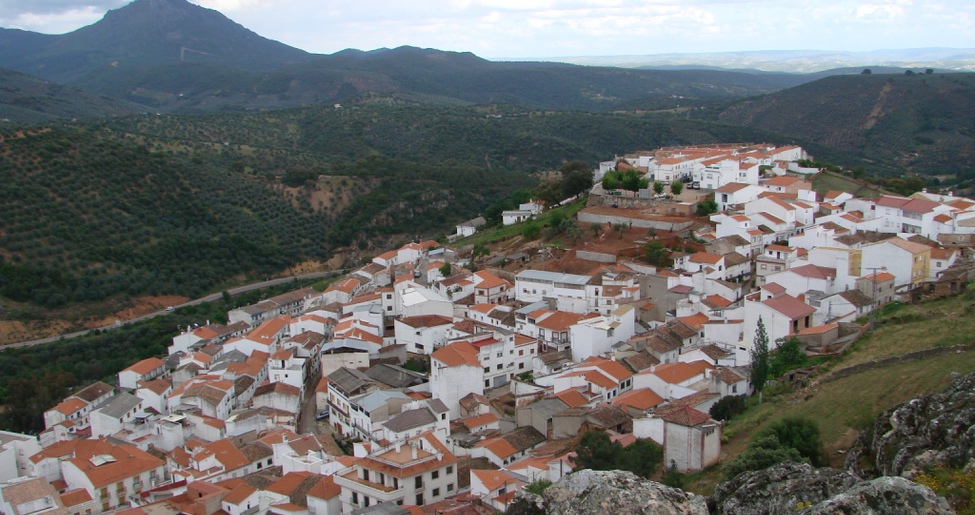 If someone would not believe, that La Palma is a volcanic island, he should go to its southern end, where instead of intensely green forests he will see lunar landscapes of solidified lava.
If someone would not believe, that La Palma is a volcanic island, he should go to its southern end, where instead of intensely green forests he will see lunar landscapes of solidified lava.
hot spring
The full name of this small town is Los Canarios de Fuencaliente and reminds you of the nearby healing hot springs (hot source), whose waters were said to heal leprosy. Springs lying on the coast were buried during the eruptions in the 17th century., in recent years, however, it was possible to determine their location under the lava, and work was undertaken to make them available again. When the healing springs ran out, the town became famous because of the nearby volcanoes and the excellent white sweet malvasia wine, which can be purchased e.g.. w Bodegas Carballo. The bus stops in Fuencaliente #3 jeżdżący pomiędzy Santa Cruz de la Palma and Los Llanos de Aridane.
The town itself is just a neat settlement on the main road. Its biggest attraction is the San Antonio volcano. Before exploring the volcano, it is worth visiting the Centro de Visitantes, where you can see an exhibition and a film about volcanoes and drink coffee or tea. Walk along the rim of the crater, inside which pine trees grow, makes a big impression, however this, what's the best, at the end - from the small observation deck at the end of the marked trail there are views of the lava-flooded coast and the red and black cone of the Teneguia volcano, which last erupted in 1971 r. The green of the vines grown at the foot of the volcano contrasts beautifully with the blackness of the lava. Those who want to do additional attractions can take advantage of a camel ride around the crater.
There, who want to see the Teneguia volcano up close, can go on a 2-hour walk (in two directions) easy and marked trail from Centro de Visitantes to the crater.
You can also reach the volcano by car – just take the exit to Los Quemados, from where the marked gravel road leads to the place.
Down to the coast and south
After a trip to the Teneguia volcano, it is worth going to the coast - preferably by LP-1282 from Las Indias, which leaves right next to the large Teneguia Princess holiday complex. The luxurious complex with pools right by the ocean actually consists of two resorts surrounded by banana plantations.
A few hundred meters further north is the small Playa Zamora, visited by nudists, although in fact usually uninhabited.
Rock formations rise along the shore, which the locals call "the mini-archipelago". There is a small Kiosko La Zamora by the beach.
Going further south on the LP-130 route, you first drive through green banana plantations, and then through disturbing lava fields. On the way, it is worth going down to charming (and illegal) the settlement of Punta Larga and make a stop at the pretty Playa Nueva lying among the lava fields – to, that there will be no crowds here is actually guaranteed.
A lighthouse rises just a few hundred meters away, Fuencaliente lighthouse, and there is a small beach next to it. There is a huge salt works here, Salinas of Fuencaliente. A small El Faro Kiosk is located by the beach. In the vicinity of the lighthouse, the LP-130 begins to climb and after several kilometers of bends it reaches the center of Fuencaliente.
Belmanco cave
The Belmanco cave is on the main LP-2 road, in which in 1752 r. the first petroglyphs made by the Guanches were discovered in the archipelago. Currently, you can visit a small museum with an exhibition on the lives of the first inhabitants and the vicinity of the grotto (the cave itself is fenced off, but from behind the barriers you can see very well).
Mazo Villa
Town situated approx. 13 km south of Santa Cruz de la Palma is famous for its cigar-making, red wine and the celebration of Corpus Christi, when the streets are carpeted with flower petals. There is a beautiful property from the beginning of the 20th century in the town., Red House, which houses a museum of Corpus Christi and traditional embroidery. Besides, you can also visit the 16th-century Iglesia de San Blas, where Flemish images dominate. Ceramica El Molino operates just outside the town, where you can buy pottery based on the vessels used by the first settlers of the island. Homemade cigars and other regional products are available at the weekly market – jumble sale. You can get wine from the Union de Cosecheros.
The bus stops in Mazo #3 running between Santa Cruz de la Palma and Fuencaliente. A very cozy 5-room country-style Arminda Hotel is located on site. There is also Prost, but cheap and good San Blas restaurant.